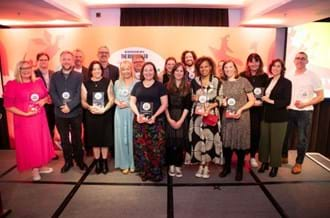Uniting health and schools to improve mental health
Uniting health and schools to improve mental health

Catherine Roche
Chief Executive - Catherine began her career in teaching before completing an MBA and joining KPMG. In 1996, her pro bono support for Place2Be inspired her to join the charity as Chief Operating Officer, and then Deputy CEO. In 2014, she became Chief Executive and has driven the organisation’s growth.
By collaborating with schools and harnessing their insight, health systems can better understand local needs to improve children’s mental health both in and outside of school.
The expansion of mental health support teams in schools is just one part of the puzzle. Schools and health must work together to achieve the government’s ambitions on mental health.
In the year since Sir Keir Starmer became Prime Minister, his ‘mission-led’ government has committed to breaking down barriers to opportunity to help children achieve and thrive. At the same time, major NHS reforms are seeking to shift from treatment to prevention and from hospitals to community.
But how to achieve these ambitions? I believe improving children’s mental health is a good place to start, with schools based in every local community at the heart of the solution.
Collaboration of health and education
This is because schools have huge access to – and knowledge about – young people. This gives them a wealth of expertise and insight to share with health partners, but currently this is an underused resource.
I would urge the health system to embrace the insight, capacity and willingness schools have to offer, and work with school leaders when making decisions about local services. By collaborating with schools in this way, health systems can glean a much clearer picture into local needs, what is being delivered and where gaps lie. Many schools provide excellent mental health and wellbeing programmes including pastoral services, anti-bullying workshops, enrichment activities such as art, sport and dance, all the way up to clinical services such as counselling. When commissioners know what is already being done in the community, they know what more is needed to improve children’s mental health both in and outside of school.
Delivering services that fit the local landscape
Better understanding of the local picture means better use of funding and unlocking efficiencies. By seeing health and education as equal partners, with shared resources, funding and expertise, we can start to generate a real place-based approach to mental health support. Integrating systems locally ensures best use of the public pound and means that services are working directly for the needs of their populations.
This is why the national expansion of mental health support teams (MHSTs) into more schools, announced by the government in May, needs to be delivered in a way that meets – and adapts to – the needs of each community and school needs, working with them rather than imposing it upon them. While the Spending Review pledged the full rollout of MHSTs by the end of this Parliament, we are still awaiting confirmed allocated funding for local health systems to deliver this. We can’t expect ICBs to do more with less.
We also can’t stop there when it comes to improving mental health support for young people; MHSTs are just one piece of the puzzle. Many schools have needs that are met by the standard MHST model, but in areas with longer waits for CAMHS, higher social deprivation, or a larger number of pupils with SEND, we see greater demand for evidence-based services, including counselling and parenting programmes, that aren’t typically included as part of the national MHST framework.
This is where local variation and involvement of expert community partners is key. In Greater Manchester, Place2Be counsellors (rather than education mental health practitioners) work with 70 primary schools as part of an MHST, while skilled practitioners from mental health charity 42nd Street work with the secondary schools. Recent evaluation of this blended model, which plays to the strengths of both NHS and impact-driven VCSE organisations, has shown value for money and provides a higher number of contacts compared to solely NHS delivery. Additionally, the expertise of the skilled VCSE counsellors has enabled them to provide a wider range of interventions that are far less prescriptive than the national model.
What does good look like?
The NHS is accustomed to a treatment lens and, if we are honest, often sets targets based on reach, scale, number of sessions and children seen. In the shift to prevention, this lens and approach also needs to change. It is important to help as many children as we can, but we need to know that we are indeed helping them. This requires strong data collection on the difference made to children’s mental health, which we measure as they continue to grow throughout their lives.
How we think about impact is a huge part of how we can reform the NHS to be more efficient, because high-quality services mean a better return on investment, making best use of the public pound.
Improving mental health is at the heart of achieving the government’s missions and unleashing the potential of the next generations. This approach, which unites schools and health, aligns funding and evaluates based on impact, means we can create a mental health landscape that works for every young person, no matter their struggles, no matter their background.
That is creating a national health service fit for the future.
News & blogs

The Week Junior Book Awards 2025 winners revealed
Find out who the winners are for The Week Junior Book Awards 2025.
Read more
Young BAFTA Roadshow with Place2Be inspires pupils in Scotland
The Young BAFTA Roadshow returns for the autumn term, beginning in Scotland.
Read more
The power of play: from football drills to counselling skills
A reflection by Brendan Kiernan, professional footballer, qualified psychotherapist, and Place2Be Counsellor alumnus.
Read more



